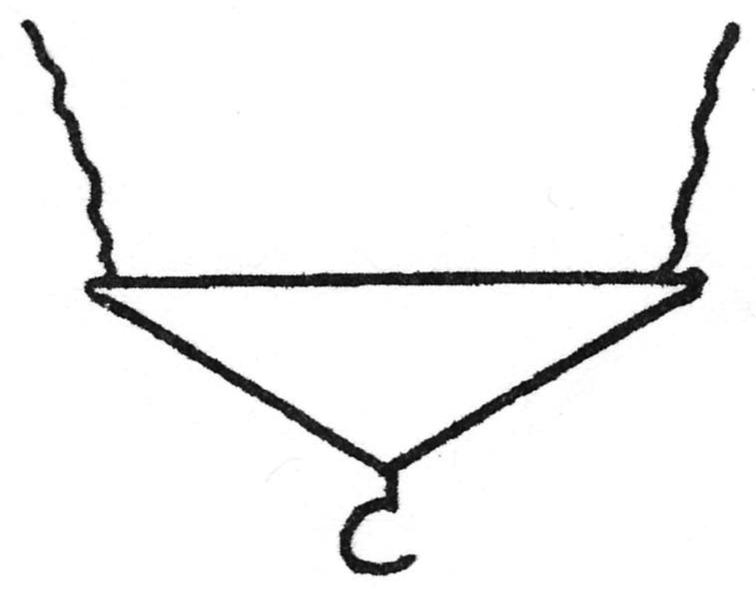November 01, 1995 Filed in:
Demo CornerJohn Childs, Grenville Christian College, Brockville
Two demonstrations from John Childs.
Big Ben?
A very impressive sound demonstration can be quickly and inexpensively performed using a wire clothes-hanger and some string or thread. Tie two lengths of string each about half a metre long to each end of the bottom of a wire hanger, so that the hanger hangs upside down. Lean forward slightly and hold the end of each string so it loops over the ends of your index fingers and press each index finger into your ears while the hanger is suspended freely. Now have a partner tap the wire hanger with a pencil. Wow! It sounds like organ chimes! Through the air, there is no sound to hear worth writing home about, but conducted through the solid string, you'd think you were listening to Big Ben! This one has to be heard to be believed.
 Lenz’s Law and the Cow
Lenz’s Law and the Cow
Lenz’s Law can be demonstrated in a nicely visual way, and for a fraction of the cost of the “official” equipment. The Central Scientific Catalog lists their Lenz’s Law apparatus for $92. You can get a six-foot length of half-inch copper tubing for $3.99. Then get a cow magnet at the local Co-op for $5.49. The magnet takes an unexpectedly long 1.8 seconds to drop through the copper tube. A six-foot free fall should take 0.6 seconds. If your students don't know that it’s a magnet, they will be quite surprised. One’s first instinct is to look into the copper tube to see what's going on in there. As a matter of fact, if you've never seen this demonstration, you'll be surprised even knowing it’s a magnet! If you have one of the small circular neodymium magnets, they take forever. A pair of 12-mm diameter magnets that I have take 12 seconds to make the drop!
To add to the fun, get a piece of steel that looks like the magnet, so you can drop the magnet, and the student helper drops the steel. The cow magnet has a diameter of ⅜”, so a readily available piece of steel is a ⅜” × 4” bolt, for 99¢. To make this look like your magnet, you do have to cut off the bolt head and the threads. (Make sure your hack saw has a new blade!) Next, grind the ends round to match the cow magnet. If you want them to really match, just use a little paint.
You can add to this demonstration by getting another copper tube and cutting a slot down its entire length. Use one of the tools that has a handle that grips a hacksaw blade leaving the end of the blade free. It’s slow, but it does the job. Holding this tube with the cut hidden in the back makes for a wonderful “discrepant event.” The Cenco apparatus has a plastic tube, but another copper tube with a slot makes the demonstration more meaningful.
Fasten the tubes together with some tape, and place a string loop between the tubes under the tape so you can hang them from a spring scale while dropping the magnet or steel through the uncut tube. (Fastening the tubes together allows you to drop the magnet or steel with the string out of the way.) The apparent weight of the tubes doesn’t change while the steel drops, but the tubes get “heavier” while the magnet falls. The falling magnet induces an electric current in the copper tube. This electric current creates its own magnetic field that opposes the direction of the moving magnet. The reaction to the upward force on the magnet is a downward force on the tube. The cut in the other tube prevents any induced current, so the magnet is not slowed. Lenz’s Law for $14.46.
Here’s a nice question to ask: How does the increase in apparent weight of the tubes compare with the magnitude of the force of gravity on the falling magnet? (Assume that the magnet falls at constant velocity.)
Column Editor: Ernie McFarland, Physics Department, University of Guelph, Guelph, Ontario, N1G 2W1 Tags: Electricity, Magnetism, Waves and Sound


